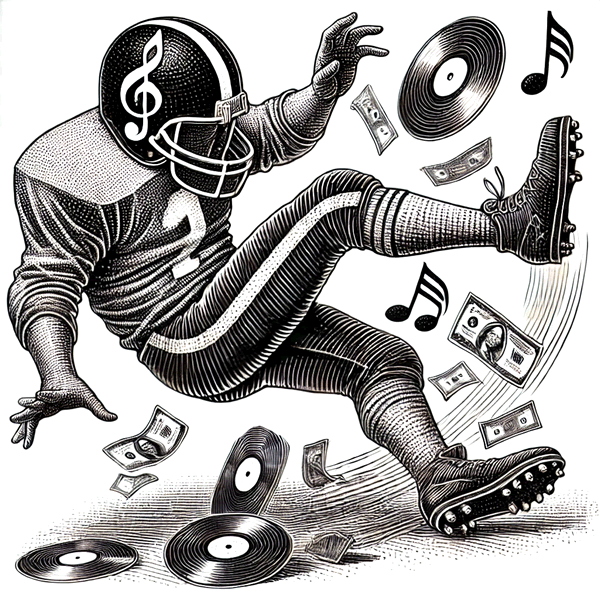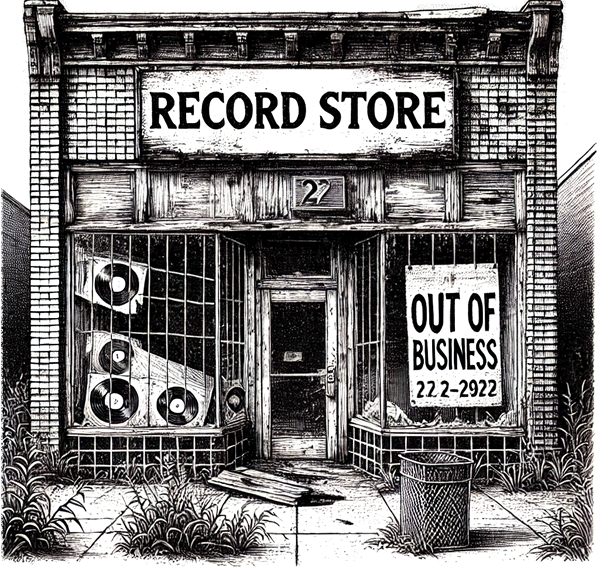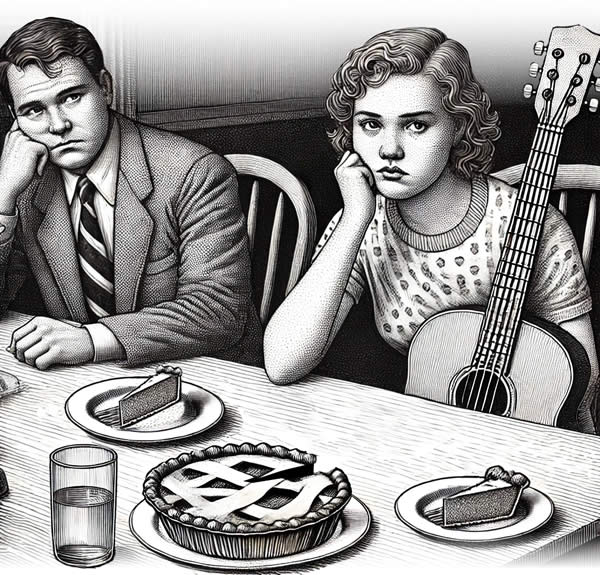The Music Industry’s $50-Billion/Year Storytelling Fumble

For decades, FM radio stations served as the primary outlet for major record labels to promote their artists. Radio listeners visited brick-and-mortar music stores to purchase records, tapes, and CDs. For a while, M-TV joined the party.
Then the story changed.
With the advent of CD burners, audio compression formats like MP3, and the ability to share files over the Internet, music became separable from its container without a loss in audio quality.
In one of the great business story fumbles of all time, the recording industry’s response was to cling to their old, sinking story. Instead of innovating, they sued Napster—only one of many music file-sharing services—and handed over a $50-billion annual opportunity to players like Amazon and Apple who had never been in the music distribution game before.
The Rise of Internet Radio and Streaming
While radio stations struggled, Internet radio platforms and streaming services gained traction. The recording industry resisted, and this cost them market share and influence.
As of 2024, the global music streaming market is worth $46.9 billion, a vast opportunity that major labels could have capitalized on had they been willing to abandon their obsolete physical distribution story and evolve.
Social Media and Video Platforms
The industry’s slow adaptation to platforms like YouTube and SoundCloud allowed these newcomers to become powerful music discovery tools. YouTube’s music content generates billions of views daily, with the platform paying out over $6 billion to the music industry in 2022—revenue that could have been controlled by record labels had they developed their own digital platforms.

The Democratization of Music Distribution
Instead of adapting to changing consumer behavior, the recording industry took an aggressive stance against file-sharing services like Napster, and this backfired. As of 2024, digital downloads and streaming account for over 80% of the global recorded music revenue.
The Rise of Independent Artists
The digital revolution empowered independent artists to reach global audiences without major label backing. As of 2024, independent artists earn over $2 billion from streaming alone. Major labels could have offered artist-friendly digital distribution models. Instead, as the relationship became toxic, the labels stayed in their marriage to record stores and FM radio stations.
Now record stores are gone, FM radio is on life-support, and the labels have pawned their gold records. Apple, Google, Spotify, and other digital services rule the industry.
Loss of Gatekeeping Role
In the old story, major labels chose the music the public would be exposed to via FM radio. In the new story, digital platforms cost them their position as the arbiters of public taste. Streaming services wield significant influence over music discovery and promotion, a role valued at billions in terms of market influence and data insights.
Big Data = Big Dollars
By not developing their own digital platforms, record labels gave digital music distributors access to valuable consumer data. As of 2024, the music data analytics market is worth over $4 billion. These crucial insights could have informed A&R decisions and marketing strategies.

The Commoditization of Music
As music went digital, the industry’s inability to maintain control over pricing led to standardization. The dollar-a-song model offered by digital storefronts (whether a “song” is a symphony or a screeching teenager) changed the value of music. And this commoditization has had profound effects on artist compensation and the types of music being produced.
Revenue Sharing for Artists with a Label:
- Streaming Service: 25-30%
- Publishing Royalties: 10-15%
- Label: 40-50%
- Artist: 10-15%
Revenue Sharing for Artists without a Label (Independent Artist):
- Streaming Service: 25-30%
- Publishing Royalties: 10-15%
- Artist: 55-65%
The Multi-Billion-Dollar Story Fumble
The recording industry’s failure to abandon an obsolete story represents a $50 billion/year missed opportunity. This includes:
- Lost revenue from streaming platforms: $20+ billion
- Diminished influence in music discovery and promotion: $10+ billion
- Missed opportunities in data analytics and direct-to-fan relationships: $5+ billion
- Loss of market share to independent artists and labels: $15+ billion
No longer are major labels the sole arbiters of public taste or the exclusive pathway to success for artists. The new narrative is one of democratized access, data-driven decision making, and direct artist-to-fan relationships. Streaming platforms, social media, and independent distribution channels own the music industry ecosystem.
By failing to let go of their obsolete story—centered on physical sales and controlled distribution—major labels wrote themselves out of the starring role in the digital music revolution.
As it always has, the future belongs to those who are willing to abandon old stories and write new ones.


